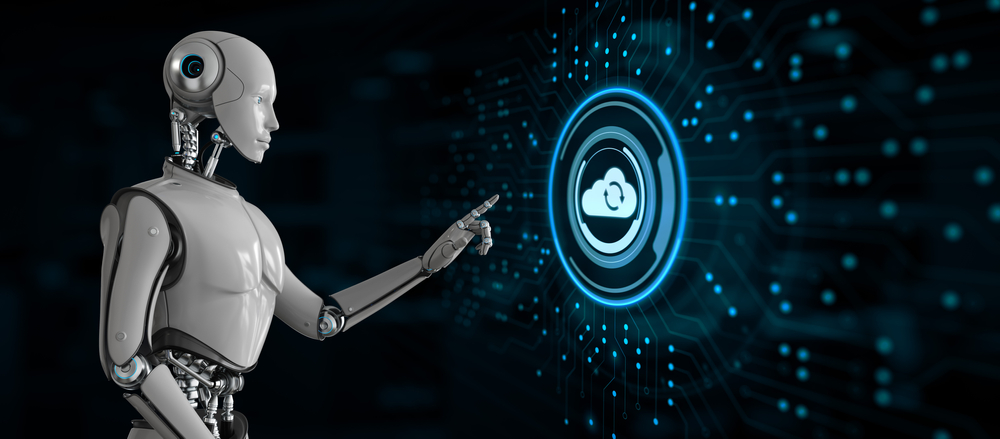An automated workforce working from some ethereal digital dimension is the stuff of science fiction. Superficially, this may seem to be a match made in heaven: the merging of two of the strongest information technology (IT) trends of the last ten years. But more often than not, organizations have been unable to make cloud-based bots work for them beyond a one off, pipe dream proof-of-concept.
Does this mean cloud-based RPA is dead? Far from it. It does mean there is a right way and a wrong way to do RPA in the cloud, and picking the right mode is critical to your potential success in this endeavor.
The two modes to choose from are:
- Bots in the cloud: RPA you manage yourself in a cloud environment
- Robots-as-a-Service (RaaS): RPA someone else manages in their cloud for your use
The differences seem minimal, but these two models represent an enormous gulf between how you acquire, use, manage, pay for, and ultimately value bots in your organization’s operations. Choose wrong, and you will have dysfunctional bots swimming in a morass of broken processes, policies, procedures, patches, and politics. Choose right, and you will have functional automations that are pleasant to be around, provide value, and leave you with good outcomes.
This is much like the difference between being a parent and being an aunt or uncle — hereafter referred to as “auncle” for the sake of simplicity.
I use this analogy as a parent. Being a parent isn’t always hard, but it definitely requires a certain level of commitment, dedication, and — let’s face it — expense. Being a parent has its benefits, but it demands a significant investment.
Conversely, I am auncle to many nieces and nephews, and I can personally attest to the many advantages of being an auncle. Most of us know of the “cool” auncle — the one the kids love to hang out with. Cool auncles can swoop in on a Saturday, take the kids away from their worn out, frustrated parents, go to the beach or amusement park or bungie jumping camp, and show the kids a great time. At the end of the day, they return the kids tired, caffeinated, sugared, entertained, and satiated, all while their parents took a nap.
Kids love these adult relatives because while their commitment is high, their investment is relatively low. The risk/return ratio works strongly in the cool auncle’s favor, so they can relax and just be themselves — instead of hyper-stressed over the kids’ quirks. Parents, on the other hand, have both extremely high commitment and investment, not to mention ownership and liability. The stakes and costs are far higher for parents, and they have a different risk/reward equation governing interactions with their kids.
RPA in the cloud: your kids, your commitment, your cost
Traditional RPA in the cloud makes you a parent to your bots. You buy the software, put it into whatever cloud you build and maintain, and assume the role of caregiver to your bots for their lifetime — or yours. All the cost, complexity, and consternation associated with their existence falls on you. Need to patch the bot? Your job. Need to load balance the bots throughout the workday? Your responsibility. Need to ensure access and compatibility with other bots, systems, standards, APIs, regulations, and rules? It all falls to you.
Cloud computing has certainly taken off. Gartner estimates the market for public cloud services exceeded $331 billion in 2020, but for many organizations the level of difficulty and expense associated with the shift to cloud computing far exceeds their expectations and capabilities. And the returns from shifting will necessarily diminish over time. If we assume our CIOs, CTOs, architects, and engineers are competent, then as more stuff goes into the cloud, those systems not yet in the cloud will increasingly be those that don’t belong in the cloud. They are the high-hanging fruit left on the tree, and should likely be left there for the birds (e.g., Lotus Notes) or allowed to fall off the tree and rot at its base (e.g., Fortran and COBOL).
Despite widespread adoption, many companies still struggle to make the cloud work for them. Adding the complexity of IA to the mix is an awful lot to ask — much like merging two families to form the Brady Bunch was almost half a century ago.
RaaS: automation’s cool auncle
Conversely, using Robots-as-a-Service makes you the cool auncle of automation. Someone else takes over the daily care, feeding, maintenance, discipline, clothing, nose-wiping, scolding, chasing, teaching, and so on, and you get to swoop in for a good time on the weekends. With a RaaS vendor keeping your bots stable, secure, scalable, and controlled, you simply need to make sure they work well with the other elements at your disposal, and then have a good time. You get to harvest the value — without the ongoing cost and commitment. You can stuff the kids full of cotton candy, popcorn, and slurpies, and take them on the looping rollercoaster knowing it’s their parents who will have to wash their clothes and tuck them in when you take them home.
Of course, this is a tongue-in-cheek analogy, but I use it to demonstrate the significant difference between operating your own RPA in your own or another’s cloud and leveraging someone else’s bots which they provide to you through their cloud. By abstracting your bots away from all your other systems and processes, you simplify their care and feeding. While these bots may be more expensive per hour, your hours with them are far fewer and generally spent on a metaphorical river rafting, camping, or shopping trip, rather than a trip to the pediatrician or principal’s office.
Parents are tied to the “sunk cost” in their children, and that’s a good thing. But it means there are significant consequences for a parent who wants out of their role — as there should be. Once committed to parenthood, you are tied to the decision. Similarly, should you choose to run your own cloud-based bots you are making commitments, or “sunk costs,” to their care and feeding which will be difficult to separate yourself from if things go wrong.
Auncles don’t have this issue. While they don’t get to enjoy the pride of parenthood — bot ownership — they also have the freedom to move along if the children should act up or want a new car for their 16th birthday. If buying enterprise resource planning (ERP) software is like being pregnant, buying RPA should be like attending the baby shower.



 By Chris Surdak, JD
By Chris Surdak, JD 
